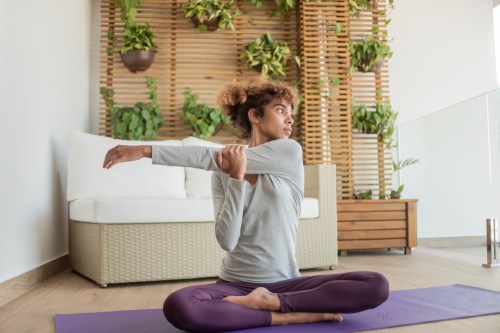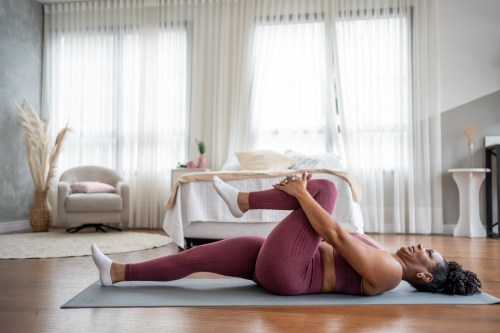Our editors independently select these products. Making a purchase through our links may earn Well+Good a commission
‘I’m a Chiropractor, and This Is What You Should Never, Ever Do to a Muscle Knot’
Chiropractors reveal the common muscle knot remedy that people should be avoiding, plus what they should do instead to relieve the pain.

When you’re dealing with a muscle knot or a crick, it tends to steal the spotlight of your thoughts (kind of like when you have chapped lips or really have to pee). These body aches are painful and annoying, and usually leave people desperate to try anything to relieve that discomfort. But there’s one common remedy that a chiropractor is begging you not to try—no matter how distracting your muscle pain may be.
Experts in This Article
executive director of chiropractic and compliance for The Joint Chiropractic
kinesiologist, author, and founder of the multi-specialty health center Tru Whole Care
certified chiropractic sports practitioner with Peak Form Health Center
“A lot of patients want to push their muscle twinge towards the pain, thinking that they need to stretch it further in that position to get into that spot,” says Travis Rose, DC, a certified chiropractic sports practitioner. Stretching your knot may lead to a hurts-so-good sensation in the moment, but in many cases, it can actually exacerbate what’s going on. “It’s an acute injury that’s telling you that there are small tears in the muscle or joint capsule, so if you’re trying to force your muscle into a certain range of motion that it doesn’t want to go in, you can prolong the injury,” says Rose. He adds that doing this could even cause the injury to travel to other parts of your body—for example, moving your neck beyond its current range of motion can cause pain to spread down to your upper back—so when you stretch a knot incorrectly, a few days of discomfort can turn into weeks’ worth of pain.
An innocent-seeming knot or crick can also indicate something deeper within your body, which is another reason to not overstretch. “Time and time again, I see clients who think they have a sore muscle and it turns out to be a full-blown nerve irritation or nerve injury,” says Todd Sinett, DC, a New York City-based chiropractor and author. “You can do more damage if you try to self-treat.” In addition to steering clear of the wrong type of stretching, he notes that you also want to stay away from applying pressure with a lacrosse ball or foam roller.
That isn’t to say that you can’t do anything to treat those pesky knots on your own—you just have to avoid crossing the line of your body’s capabilities. “Doing some gentle ranges of motion and mild stretching in painful areas are fine if it feels good,” says Dr. Rose (with an emphasis on the “mild” part of the stretching). Once you feel pain, stop the movement.
The golden rule of taking things slow and easy definitely applies here. “Do not push yourself,” says Steve Knauf, DC, executive director of chiropractic and compliance for The Joint Chiropractic. “Take time to try and relax the area that’s giving you issues. These minor aches or pains are early signs that your body is under some kind of stress.” If your pain isn’t going away or you suspect it can be something more serious, book a session with a chiropractor or physical therapist. Otherwise, using cold or hot therapy (perhaps via this Sunbeam Heating Pad, $18) or applying a cream with CBD can help to relieve the pain. (FWIW, I’m a fan of the Cannanumb Hemp Seed Oil Roll-On, $20). Sounds like a great excuse to draw yourself a warm CBD oil-spiked bath for some R&R.
If you want to try some easy stretches, check out this 15-minute stretch and recovery series… as long as it doesn’t cause you any pain in your muscle tightness:
Oh hi! You look like someone who loves free workouts, discounts for cult-fave wellness brands, and exclusive Well+Good content. Sign up for Well+, our online community of wellness insiders, and unlock your rewards instantly.
Sign Up for Our Daily Newsletter
Get all the latest in wellness, trends, food, fitness, beauty, and more delivered right to your inbox.
Got it, you've been added to our email list.










